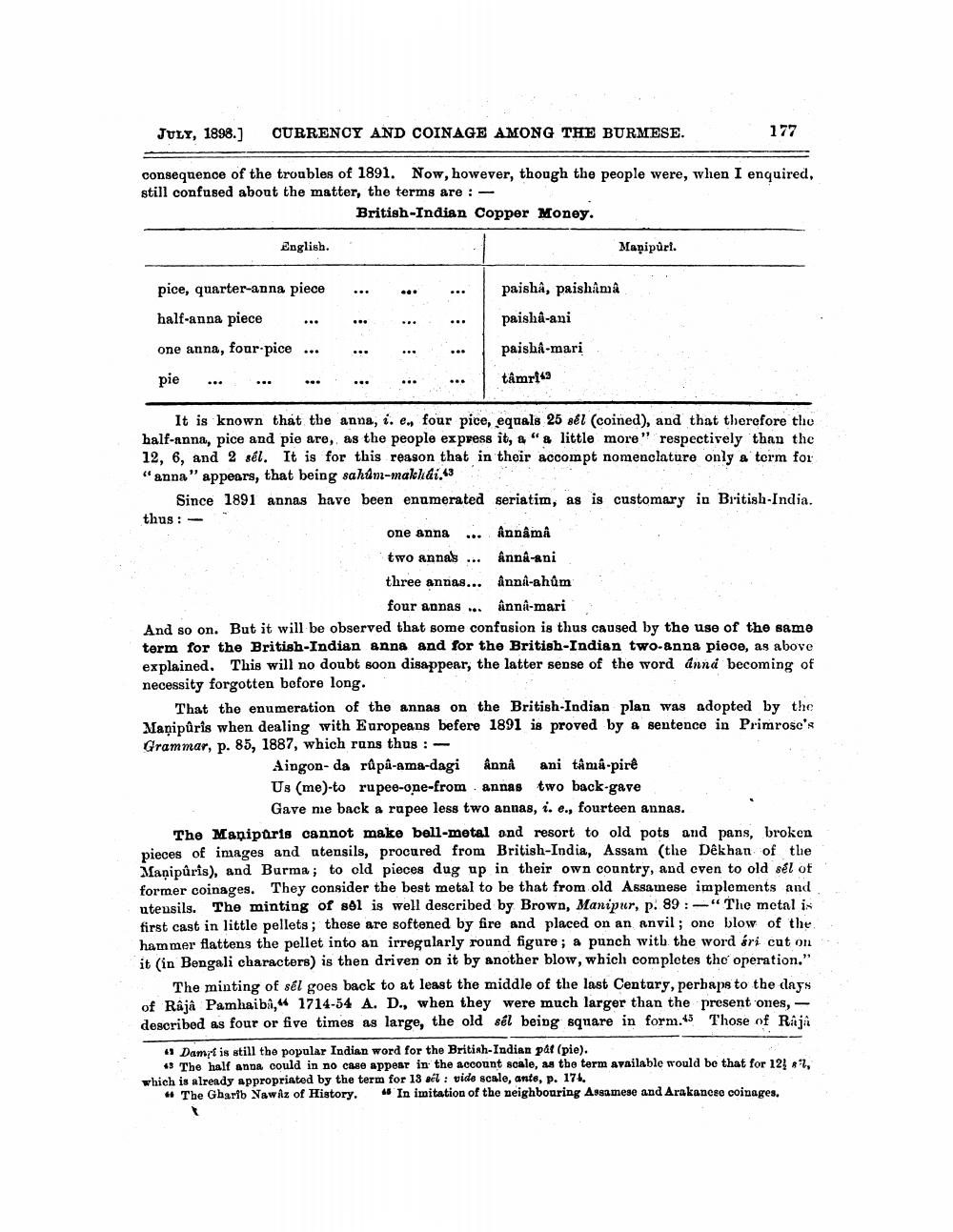________________
JULY, 1898.] CURRENCY AND COINAGE AMONG THE BURMESE.
177
consequence of the troubles of 1891. Now, however, though the people were, when I enquired, still confused about the matter, the terms are: -
British Indian Copper Money.
English.
Mapipuri.
pice, quarter-anna piece half-anna piece ... one anna, foar-pice ...
paishâ, paishama paishậ-ani paisha-mari tâmr143
pie
...
...
....
...
...
It is known that the anna, s. e. four pice, equals 25 aêl (coined), and that therefore the half-anna, pice and pie are, as the people express it, & "& little more" respectively than the 12, 6, and 2 sél. It is for this reason that in their accompt nomenclature only a term for "anna" appears, that being sahin-maklidi.3
Since 1891 annas have been enumerated seriatim, as is customary in British India. thus:
one anna ... Annama two annas ... Anna-ani three antias... anni-ahům
four annas ... Anna-mari And so on. But it will be observed that some confusion is thus caused by the use of the same term for the British Indian anna and for the British Indian two-anna piece, as above explained. This will no doubt soon disappear, the latter sense of the word annd becoming of necessity forgotten before long.
That the enumeration of the annas on the British Indian plan was adopted by the Manipuris when dealing with Europeans befere 1891 is proved by a sentenco in Primrose's Grammar, p. 85, 1887, which runs thus :
Aingon- da rûpå-ama-dagi Anna ani tâmâ.pire Us (me)-to rupee-ope-from annas two back-gave
Gave me back a rapee less two annas, i. e., fourteen annas. The Manipäris cannot make ball-metal ond resort to old pots and pans, broken pieces of images and utensils, procured from British India, Assam (the Dêkhan of the Manipůris), and Burma; to old pieces dug up in their own country, and even to old sél of former coinages. They consider the best metal to be that from old Assamese implements and utensils. The minting of sol is well described by Brown, Manipur, p. 89:-"The metal is first cast in little pellets; these are softened by fire and placed on an anvil; one blow of the hammer flattens the pellet into an irregularly round figure; a punch with the word sri cut on it (in Bengali characters) is then driven on it by another blow, which completes the operation."
The minting of sel goes back to at least the middle of the last Century, perhaps to the days of Raja Pamhaibî,4 1714-54 A. D., when they were much larger than the present ones, - described as four or five times as large, the old sél being square in form. Those of Raja
il,
41 Damit is still the popular Indian word for the British Indian pal (pie).
43 The half anna could in no caso appear in the account scale, as the term available would be that for 12 which is already appropriated by the term for 18 ail: vide scale, ante, p. 176.
# The Gharib Nawaz of History. - In imitation of the neighbouring Assamese and Arakanceo coinages.




